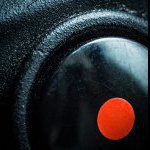Leaderboard
Popular Content
Showing content with the highest reputation on 02/25/2013 in all areas
-

Iscorama VS Iscomorphot 8 2x VS Iscomorphot 8 1.5x
mirekti and one other reacted to QuickHitRecord for a topic
Since I have all three at the moment, I decided to make a test for my fellow anamorphic enthusiasts: http://vimeo.com/60401188 Not exactly scientific, but I tried to be methodical. The Iscorama is sharp wide open, but my Iscomorphot 2x has to be closed down to f/2.8 or smaller, and the Iscomorphot 1.5x really isn't too useful before f/5.6. They each have their own unique character. Which image do you prefer?2 points -
The thing that frustrates me about Nikon is that they really have no reason to hold back when it comes to competing in the Cinema DLSR market. Why are they stepping in so timidly when they can really just go all out with at least one of their cameras and tweak it for Cinema use. Put in a robust codec, LOG Profile... You know just get serious and kick Canon in the teeth. Even if they didn't go all out and do a 4K camera, why not a 2.5k D800 or D7100? The D5200 comes so close to giving people what they want in an affordable Hybrid camera and yet such basic flaws in the camera that don't seem to need to be there. How much more would it cost them to ask Pros what they should deliver in Cinema Nikon? As long as they price their cameras under Canon they'd likely be successful as heck. Still the D5200 is a heck of a bargain. I can't wait to see what the deal is with the D7100.2 points
-

Driftwood "Moon Trial 3" @ ISO640 + Film Convert + ColorGHear + Anamorphic
nahua and one other reacted to Sean Cunningham for a topic
With a little luck, Goat Man's Hill will be going into pre-production on our next feature in the next couple months. In all likelihood I'm going to shoot most of it with "Moon Trial 3" and anamorphic. A good deal of it will be available light and night in urban spaces. The basis for my finishing pipeline will be After Effects, Film Convert and ColorGHear. I've started roughing out various recipes for how the footage will flow through the pipeline, mainly dealing with NR and then the right balance of grain to put back in. At some point I may investigate ColorGHear Pro's grain layers instead of this portion of Film Convert. http://vimeo.com/60359953 This is a boring test video. If you don't like boring videos testing very specific settings, software combinations or techniques, keep moving. That said, it does have a cat! Seriously, there's a lot of excitement re: Driftwood's "Moon Trial 3", especially where 24P is concerned. After doing a snoop on ISO noise between 12500 - 160 I was blown away by how clean ISO640 is with this patch. I wanted to shoot a high contrast, available light scenario to not only play with NR but also different techniques and levels of simulated film grain (via Film Convert). The irony in this is not lost on me, hah-hah. I output three versions of a pan + dolly. In all three scenarios I'm using Film Convert for my basic "emulsion pass" but with grain turned down to 0% (I knew I'd be applying it later). Each version also uses ColorGHear to give it a slight grade (switching off any cinegamma nodes because this function is provided by Film Convert). All three versions use the "GHrain Killer" GHear to smooth out the chroma noise. Because this also filters out detail and sharpness in the luminance portion of the image I use the NR on a layer I just intend to use for its color. All three versions also use the technique I standardized on for SICK BOY to enhance small contrast and detail without the false edging you get very quickly with typical sharpening kernels and still rather quickly with the Unsharp Mask tool. Lens Used: 35mm f/1.4 Nikkor + Century Precision Optics 1.33X Anamorphic *1st Pass* ...I combine the "grainkilla" smoothed chroma with an original, unfiltered luma and 42% grain over the entire image. *2nd Pass* ...I leave out the original luma, passing through the filtered luma and then depending on my LCE (local contrast enhancement) pass to re-establish an acceptable level of detail (still enhanced versus the original). The result is sharp edges and the ability to make out tiny textures like on the wall, the material on the chairs, etc. but also exceptionally smooth looking blacks even when I blow out the exposure to see "what's down in there". This version also has a uniform 42% grain applied to the whole frame. *3rd Pass* ...in this one I do everything I did in the second pass but this time I create a luminance key with a "bell" shaped response that gives me all the mid tones while rolling off both shadow and highlight region and grain is applied through this key (this is based on an article I read interviewing the DP and colorist re: an episode of HOUSE that was shot all on the 5D where they discuss applying grain in this way). This allowed me to bump up the grain to 77% yet the net result doesn't feel as overall noisy as the previous two examples. Oh, and 4' of dolly track just isn't enough.2 points -
Don't be pedantic. Use in a film or art to serve a point is different. At the very least, in jest, it's only appropriate between well acquainted friends who can communicate with each other without the need of pretense or editing. Do you enjoy such a relationship with Andrew? You were just being disrespectful and baiting so that you could play the part of the victim and create or turn this into a political issue with Islamist propaganda overtones. Dude, you choose to live and work in a country that criminally indicts individuals residing in other countries for TWEETS they see as anti-Islamic. GTFO with your very ironic hypocrisy.2 points
-
@Bruno, agree. The camera is a tool. The top of the food chain cameras will deliver astonishing images whether it be the Alexa, Epic, Sony F65/55, etc. Boils down to what the director envisions for his feature. Knowing the strengths/weaknesses with a camera and knowing how to work with it, leads to success. Cheers.1 point
-
Exploring Nikon D5200 HDMI output - review update
jgharding reacted to chauffeurdevan for a topic
Not exactly. First, each Cb and Cr (could also be UV) channel represent the deviation from gray on an axis ( from wikipedia : CB/PB and CR/PR are deviations from grey on blue–yellow and red–cyan axes, whereas U and V are blue–luminance and red–luminance differences.) (The LAB colorspace is using the same principle) So for example, the CB/PB channel representation in 8bit is at 0 - blue full saturated, 64 - blue half saturated, 128 - grey, 256 - yellow full saturated. Second, in the 4-2-2 relationship, the 2-2 doesn't not represent the channels, but samples per row. The sampling formula always seems to be represented on by 4 pixel columns by 2 row. So in a 4-2-2 sampling, for a region of 4 pixel wide (4-x-x) by 2 (the second row - not related to the 2s in 4-2-2), you have on the first row, 2 samples of chroma (for both U and V, or Cb and Cr), and on the second row, 2 samples. So, on a 4-2-0, on first row, 2 chroma samples of each channels, but no sampling on the second row (it is like have half resolution on both x and y axis of chroma versus luma, eg. 1920x1080 luma resolution, 960, 540 chroma resolution). In 4-1-1, you have one sampling of chroma on each row (so for a 1920x1080 luma resolution, you get a chroma resolution of 480x1080). in 3-1-1 sampling, like XDCAM EX and HDCam HD, you have for each 4 pixels of luma in source, only 3 samples of luma at the output, that is why those codec are 1440x1080 with a 1.33 pixel aspect ratio.1 point


